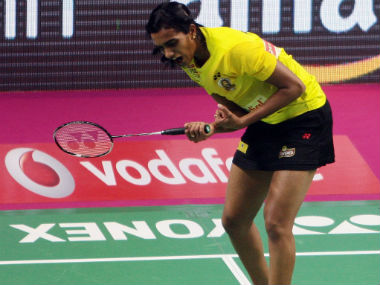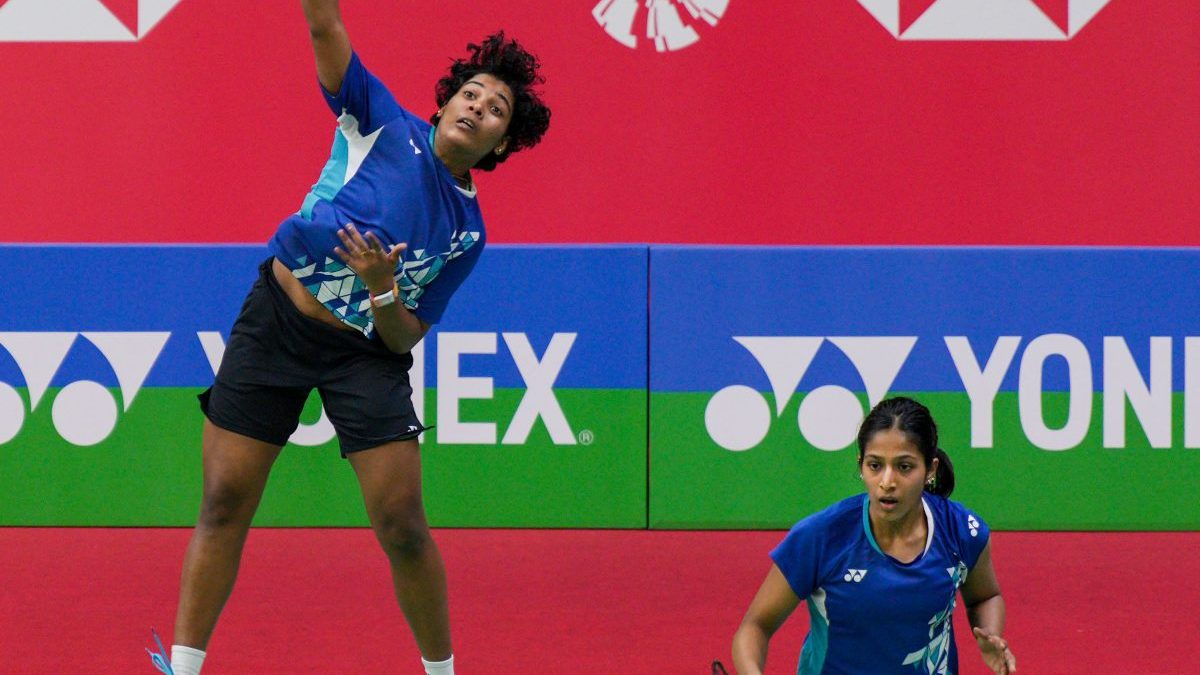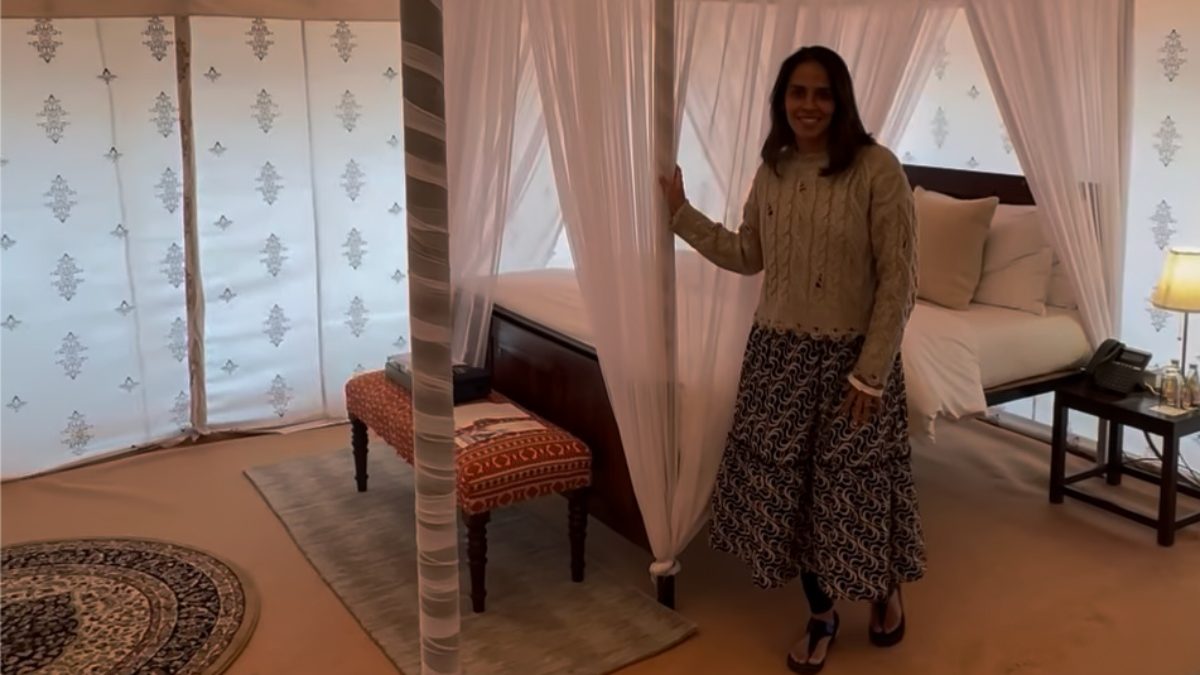There are a huge number of positives that Indian badminton can take back at the conclusion of the second edition of the Premier Badminton League (PBL).
A truly worthy final between the two best sides in the six-team league capped a fortnight of high-octane action that provided full satisfaction to spectators within the stadia at the five centres, and to the vast television audience that would have been glued to their sets every evening, watching and almost experiencing first hand the chills, thrills and spills that are an integral part of this wonderful sport.
That Chennai Smashers pipped Mumbai Rockets by a wafer-thin 4-3 margin showed the closeness of the final, with the trumps on both sides coming good, and the tie going down to the final game of the fifth match, in which Thailand’s Tanongsak Saensomboonsak outlasted and outwitted Ajay Jayaram with a come-from-behind performance full of grit as much as flair.
There was some apprehension before the start of the competition that it might disintegrate or even die stillborn, as there had been a massive, open battle between the Badminton Association of India (BAI) president, Akhilesh Dasgupta, and his long-time lieutenant, Vijai Sinha.
Things came to a head when Sinha, who functioned as BAI secretary, was expelled from the association, and could have disrupted the PBL. Eventually, he could not muster the requisite support needed to topple Dasgupta, and the event went ahead with the full fanfare that had been meticulously planned for it, and the innovations in the playing rules that were designed to make the event short and snappy.
There was a unanimous thumbs-up from participants and spectators alike for the slam bang format of three games of 11 points each (11X3) on the point-per-rally system. There were doubts galore when the scoring system was further shortened from the 15x3 format employed in the inaugural edition of the league last year, with the aim to keep the matches tighter and even more television-friendly than in 2016.
Purists might well demur at this version of “instant” badminton, but it suited most of the overseas players, for whom the fortnight in India was akin to a paid vacation. The matches were not very physically demanding, as they mostly lasted between half-an-hour and 40 minutes, that is half the time the regular 21x3 format encounters take to complete.
Further, the remuneration for the players picked up in the auctions of the Rs 60 million (Rs 6 crore) event was munificent enough to induce the Awadhe Warriors icon, Saina Nehwal, to urge the Badminton World Federation (BWF) to increase the prize money in the Super Series tournaments, so that players would feel they were being well-compensated for the hard training they have to do round the year.
The “trump” system, of two points for a win and a minus mark in case of a defeat, succeeded in keeping interest in the league alive until the final pool match, by the end of which any one of three teams – Hyderabad Hunters, Bengaluru Blasters and defending champions Delhi Acers – could have joined the other three sides (Awadhe Warriors, Mumbai Rockets and Chennai Smashers) that had qualified earlier for the semi-finals.
The most shocking results of the league stage were the identical 6/-1 thrashings that both Mumbai and Awadhe inflicted upon the hapless Delhi team, which sported the world numbers two and four men’s singles players in their ranks, apart from a formidable doubles combination in the reigning All-England champions Vladimir Ivanov and Ivan Sozonov.
The acievements of Denmark’s Jan O Jorgensen and South Korea’s Son Wan Ho counted for nothing against opponents rated way below them, like Jayaram and HS Prannoy respectively in the Delhi-Mumbai clash, as the Acers lost all five matches, including their trumps, in each of these two ties (against Awadhe and Mumbai), to descend permanently into the cellar.
For the Indian players who had the opportunity of matching their wits against the best in the world, the PBL proved to be a memorable tournament. Players like Jayaram (who trains in Bangalore with Tom John) and Pullela Gopichand Academy stable-mates Parupalli Kashyap, Prannoy, Kidambi Srikanth, B Sai Praneeth, Sourabh and Sameer Verma all put in excellent performances, to trouble the best in the world.
Special mention must be made of Prannoy, who had had a mixed PBL-2016, but finished this year’s tournament with a perfect 7-0 record. He was the hero in at least two of Mumbai’s pool triumphs, which would not have been possible but for his crucial contributions.
Prannoy is neither the fastest of movers on the court nor does he possess the most powerful smash, but he is smooth in his movements, judicious in his attack pattern, accurate and controlled with his deep clears and tosses, and has a cool head on his shoulders. Most importantly, he fights to the end, and simply does not have the words “meek capitulation” in his lexicon.
As for India’s current poster girl, Pusarla Venkata Sindhu, she was in magnificent form throughout the tournament, only suffering a solitary defeat at the hands of world and Olympic champion Carolina Marin in her opening outing in the competition. She combined speed and aggression in equal measure while settling the pretensions of South Korea’s world No 3, Sung Ji Hyun, to whom she had yielded in the year-ending BWF Super Series finals in Dubai last December.
Sindhu’s victory over Saina in the Chennai-Awadhe semi-final showed she is ready to take over from her compatriot if the 2015 World Championship silver medallist’s bothersome knee does not allow her to regain her old form and speed.
Hopefully, that passing of the baton may not be needed for another couple of years, at least, although the PBL matches showed that India lacks bench strength in women’s singles. Neither Tanvi Lad nor Rituparna Das, who were given a chance of displaying their wares, proved capable of troubling the established stars.
Yes, doubles ace Ashwini Ponnappa did perform a star turn as an unexpected singles exponent against Marin in the Bengaluru-Hyderabad pool clash, but that really was due more to the surprise element and the truncated scoring format than any genuine singles pretensions on the Coorg girl’s part. Ashwini, now 27, would do well to forge a women’s doubles partnership with left-hander N Sikki Reddy, as India’s lead pair in the country’s next Uber Cup campaign.
The second PBL also unearthed an outstanding doubles player in Satwik Sai Raj Rankireddy, who turned 17 years of age during the course of the tournament, while donning the colours of Hyderabad Hunters. Satwik showed great sense of positioning and tactical acumen while pitting his wits against some of the best mixed doubles players in the world, including Englishman Chris Adcock and Russian Vladimir Ivanov.
The husky teenager’s combination with Hong Kong’s Chau Hoi Wah produced some fabulous triumphs for his side, including one against Delhi, which revealed that Commonwealth Games gold medallist and doubles specialist Jwala Gutta needs to seriously examine her future in the game, given her current level of fitness and form. But Satwik, whose bullet smash troubled every one of his opponents, is a major find for the future.
On the flip side, there was a happenstance during the Chennai-Mumbai final that would have set Kashyap, the Mohinder Amarnath of Indian badminton, back by at least three months. Getting gradually back to his best after a prolonged stay on the sidelines due to knee problems, the 30-year-old comeback man suffered a huge setback when he dived headlong for a fast-dropping shuttle, and fell awkwardly on his shoulder.
The resultant injury has been provisionally diagnosed as a torn ligament, though it is not yet apparent whether the rotator cuff was also involved. If the latter has been torn, the recovery and rehabilitation period could be much longer, up to as much as a year, depending on the severity of the tear.
Be that as it may, what was heart-warming to see was the genuine concern on the face of Kashyap’s rival Prannoy, who until that point had been pumping his fists aggressively after every point won, and unwilling to give any quarter to the veteran Olympian, six years his senior.
The moment he realised that Kashyap could not put any power into his shots, and that the match was assuredly in his pocket, Prannoy eased his foot off the gas pedal, and only put in as much effort as was required to ensure the badly needed point for his team. And at the end, he came to the net and patted his rival solicitously on the hip with his racket, as if to say that he hoped the injury was not too serious.
These gestures were indicative of the camaraderie that the Pullela Gopichand Academy trainees – like Kashyap, Srikanth, Prannoy, Sai Praneeth, Aditya Joshi, the Verma brothers – share, in spite of the strong rivalry between them as they strain every nerve and sinew to go past their stable-mates on the BWF rankings list.
This was completely antithetical to the perfunctory touching of hands at the net between Saina and Sindhu, as the two studiously avoided looking at each other after the latter had scored the winning point in the Chennai-Awadhe battle. Their dislike for each other is well known and documented, since the time of their only previous meeting, in what was the Indian Badminton League, in 2013.
Much as one admires Saina for all that she has achieved, and the manner in which her exploits have resulted in popularising the game in India, one finds it hard to forgive the manner in which she denigrated her coach of the previous decade, Gopichand, when she made a momentous decision in 2014, to leave his academy , and train with Vimal Kumar at the Prakash Padukone Academy in Bangalore.
It is widely felt, though never confirmed, that Saina was unhappy about the amount of time that Gopichand had begun spending with Sindhu, and had thought that it had been at her expense. Since 2008, the Haryanvi girl (whose family moved to Hyderabad so that she could train there) had been Queen Bee at Gopichand’s badminton centre, and the undoubted centre of attention.
The Dronacharya Award winner, Gopichand, for his part, has never spoken a harsh word about his erstwhile ward, and has either maintained a dignified silence, or conceded that it was entirely up to Saina to move away from his academy if she felt she was not deriving the requisite value from his coaching any more.
Sindhu’s meteoric rise over the past four years, ever since she won the first of her two World Championship bronze medals in 2013, has been hard for Saina to digest; the tall Olympic silver medallist had become a major professional rival in her own den.
But Saina, who has little left to achieve in international badminton, should realise that she is now the elder stateswoman of the game in India, and still the leader of the country’s Uber Cup squad, in which Sindhu is a vital cog. For the sake of team spirit, if for nothing else, she needs to extend the hand of friendship to her junior. Sindhu, known to be a warm and affectionate person, will no doubt grasp it warmly.


)




)
)
)
)
)
)
)
)